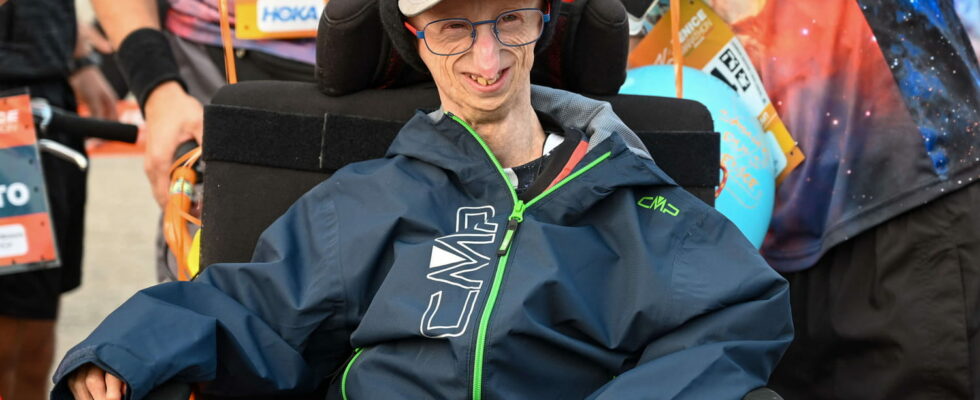Progeria significantly reduces life expectancy.
Progeria is a disease responsible for accelerated aging; it is also called “Benjamin Button syndrome”. “Progeria affects 1 in 20 million children” informs us Dr Xavier Nissan, researcher in charge of the “Diseases of aging” team at the Stem Cell Institute for the Treatment and Study of Monogenic Diseases (I-Stem)” in Evry. “There are only two children left in France who have this disease” he specifies. The third child who suffered from it, Rania, YouTuber, died of the disease in October 2020. In the world, the Italian Sammy Basso suffering from progeria died on October 5, 2024 at the age of 28, it was the oldest patient in the world.
What is progeria?
Progeria or Hutchinson Gilford syndrome (HGPS) is a very rare genetic disease. “It is due to a mutation in the LMNA gene which causes accelerated aging” explains Dr Xavier Nissan. The cause is therefore genetic. This LMNA gene controls the production of two molecules, lamins A and C. Due to the mutation, an abnormal form of lamin A, progerin, is expressed. This toxic protein is responsible for the disease. Progeria is genetic but is not hereditary because the gene mutation occurs “de novo” that is to say in children without being present in the parents.
“The bodies of these children age 10 years every year”
What symptoms?
The disease begins around the age of 2 on average. It is characterized by generalized cellular and tissue aging (skin, blood vessels, heart, bones, muscles). “The bodies of these children age by 10 years each year. Only the brain does not age in an accelerated manner at the cognitive level.” says Dr. Xavier Nissan. “Children with Progeria have a growth disorder, they are very short, lose their hair and acquire a typical body shape.” This facial dysmorphia is characterized by a prominent forehead, bulging eyes, a thin nose with a beak-shaped tip, prominent ears, thin lips, and jaw deformation. Other signs of accelerated aging are thin, wrinkled, fat-free skin, bone and muscle disorders, joint pain, and cardiovascular disorders.
“Genetic diagnosis is made when symptoms appear. There is no genetic diagnosis that is made before symptoms appear.” informs Dr. Xavier Nissan.
Life expectancy: how old can you live?
“Life expectancy is 14 years on average” informs the researcher. Some children with Progeria reach the age of 20 or even exceed this age. Sammy Basso, the oldest patient, died in 2024 at the age of 28.
What are the treatments for the disease?
There is no medicine that cures this disease. A treatment is approved by the FDA in the United States. This is lonafarnib. “This drug used for certain forms of cancer. Recently tested on Progeria, a clinical trial showed that it increased life expectancy and reduced symptoms, particularly bone and cardiovascular symptoms.” informs the researcher. In the United States, children with progeria are treated with this medication alone or in combination with another medication, everolimus (combination studied in another clinical trial). In Europe, children can either be included in the American clinical trial or be treated with a combination of drugs (pravastatin and zoledronic acid) that is part of a clinical trial that has ended. “A clinical trial with a drug, progerinin, is in preparation and was announced at the last International Conference on Progeria.” announces Dr Xavier Nissan who emphasizes that Progeria is one of the rare diseases for which there were the most therapeutic avenues but that the lack of patients means that studies often stop at animal models.
Death is most often the result of cardiovascular damage, “in particular the development of cardiovascular accidents linked to the disappearance of vascular smooth muscle cells which allow blood vessels to contract and evacuate what can obstruct them.” explains Dr. Xavier Nissan.
Thanks to the researcher responsible for the Diseases of Aging team at the Stem Cell Institute for the Treatment and Study of Monogenic Diseases (I-Stem) in Evry.
